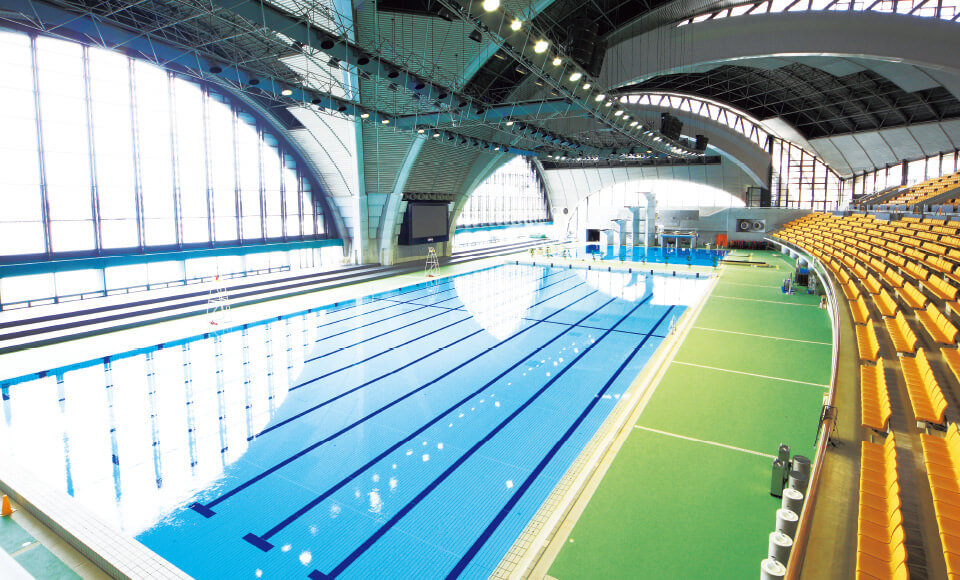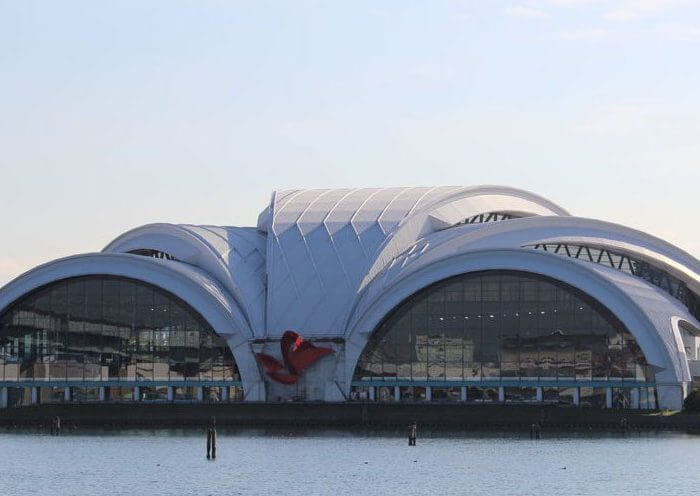2020 Tokyo Organizers Have Solution for Asbestos Problem at Water Polo Venue: Cover It Up!

For the last three weeks, questions about venue safety for Olympic water polo competition have circulated on international news media, threatening to upset the carefully calibrated planning of the 2020 Tokyo Games. As reported last month by the Japanese newspaper Asahi Shimbun, a decision made three years ago by the Japanese government during renovations of the Tokyo Tatsumi International Swimming Center has resulted in a firestorm of criticism.
[More Headaches for 2020 Tokyo Organizers: Asbestos at Olympic Water Polo Venue]

At issue is asbestos, a known carcinogen, that was discovered during a 2017 renovation on the center’s roof structures. At that time, the Tokyo Metropolitan Government chose not to address the issue. The Asahi Shimbun’s bombshell report put 2020 Tokyo planners on their heels a mere six months before the games are meant to open.
There is good news; according to a recent statement by the 2020 Tokyo Games Organizing Committee, a solution is at hand.
“[I]n consideration of the risk of damage in the event of a disaster, the Tokyo Metropolitan Government decided to implement additional measures to increase the degree of protection, including covering the treated sections with sheets; this is scheduled to be completed by the end of March 2020,” the committee said in an email to Swimming World.
This proposed solution will not fully quell the controversy. However, it does outline a path to safety that may defuse intense criticism of how this situation has been handled.
Just how serious is this problem?
The timeline begins in 1993, when the center was built. During construction, asbestos was sprayed on the steel columns that support the building’s roof. Use of asbestos in Japanese construction was subsequently banned in 2012; when renovations at the center for the 2020 Olympics were begun in 2017, the situation regarding treatment of this fireproofing material had therefore changed.

Photo Courtesy: Tokyo Sports Benefit Corporation
The Tokyo metropolitan government, which owns the center, acknowledged that regulations governing the use of asbestos have now been tightened up, and that the scope of target substances has been expanded. But, basing it’s decisions on an environmental survey, the Tokyo government decided that since the treated sections were covered with panels—and there was no deterioration of or damage to the material—there was no risk of asbestos contamination at this time.
Now, all observers wish they had taken action at that time.
Asahi Shimbu documented that the areas in question were not sealed off from their surroundings. In addition, the building’s structure allowed for air within the section in question to circulate over spectator seats.
Daniel King, a writer for Asbestos.com, argued that under current Japanese building standards law, asbestos must be removed or contained when a major repair or improvement is made to a building. Like others, he takes issue with the Tokyo government’s determination that the asbestos found in the Tatsumi Swimming Center did not warrant a “major” repair or improvement.
[US Officials Respond to Asbestos Issue at Tokyo 2020 Water Polo Venue]
King responded to a Swimming World request for comment, providing a timeline of how this situation unfolded. As he described it, the asbestos-containing materials were found in parts of two column bases holding up the main roof. Tokyo metropolitan government officials deemed the public would not come in contact with the materials since they were contained to an isolated area.

Daniel King. Photo Courtesy: Asbestos.com
“Japanese officials took action only after The Asahi Shimbun released their report of the negligent handling of this issue,” King said in an email. “It’s difficult to say if Japanese government officials prepared for this prior to the inspection or after the asbestos was discovered. While Japan’s regulations seem subjective — and although the asbestos was in a ‘low traffic area’—it does present a human health risk.”
Like the United States, Japan was a heavy user of asbestos products in construction for much of the 20th century. Japan now has a full asbestos ban, while the U.S. does not (only strict regulations).
King notes that both countries have a major issue with what’s called legacy asbestos, or aging asbestos materials in buildings older than regulations currently in force.
Asbestos: a staple of 20th Century architecture now shunned
For perspective on how this issue plays out in architectural circles, Swimming World spoke with Mihai Radu, AIA, the principal for Radu Architects in New York City. A practitioner who has worked for some of the world’s leading architects, including I. M. Pei & Associates on the Louvre Museum renovation in Paris, as well as for Richard Meier & Partners Architects. Radu also happens to have been a water polo player in his native Romania.
“At this point in time it’s difficult to determine if there is an asbestos problem [at the Tatsumi Swimming Center],” Radu said in a phone conversation. “If, as is reported in [Asahi Shimbun] nothing was done to address the areas containing asbestos—areas where the public are at risk of exposure—then that’s a dangerous situation.”

Mihai Radu. Photo Courtesy: Radu Architects
But, speaking about a situation that is a constant consideration for commercial practitioners, given that asbestos was a ubiquitous building material in construction last century, Radu, who has worked on projects in North America, Africa and Europe, added: “If these affected areas are not only removed from exposure to the public but the asbestos is properly encased, then this is not a significant health risk, at least according to building codes in the United States.”
This leads to another potential can of worms for the 2020 Tokyo Games Organizing Committee; if there’s asbestos in this building, what about other Olympic structures that have not been examined? The Asahi Shimbun estimated that as of October 2016 a small percentage of public facilities in Japan contain asbestos for which no action has yet been taken.
For King, that number—no matter how small— is simply too much to ignore.
“It is the responsibility of the Japanese and Tokyo government, along with the Tokyo 2020 Organizing Committee, to ensure that this issue is dealt with swiftly and efficiently,” he said. “Asbestos poses too much of a risk to Olympic athletes, officials and spectators to take a nonchalant approach because the issue doesn’t prompt action under their subjective regulations.”
The Tokyo Organizing Committee’s optimistic statement to the contrary, King’s caution on this issue warrants further examination of an issue that threatens to detract from what should be the new decade’s greatest sporting event.
All commentaries are the opinion of the author and do not necessarily reflect the views of Swimming World Magazine nor its staff.



